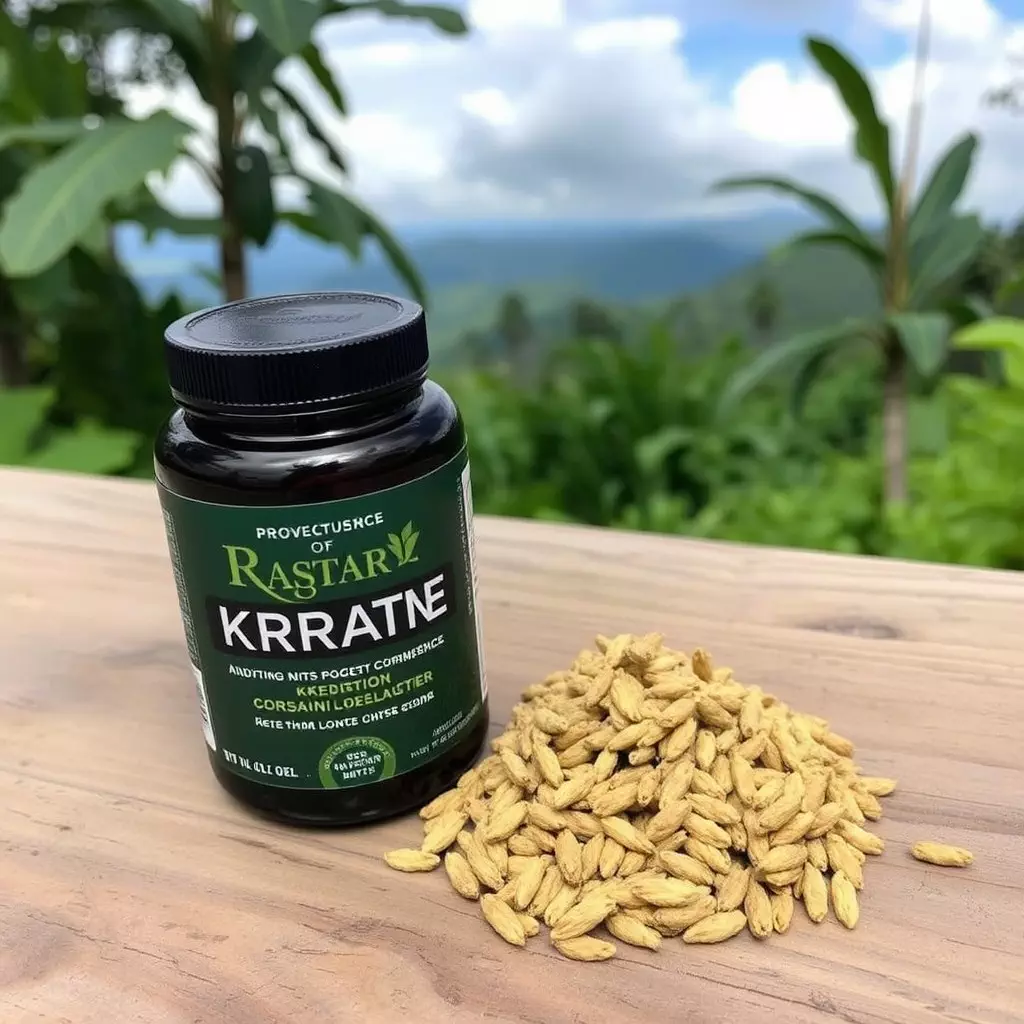Kratom, derived from a Southeast Asian tree, has gained attention as a natural alternative for joint pain relief, with potential benefits supported by its alkaloids like mitragynine and 7-hydroxymitragynine. These compounds interact with the body's opioid receptors to provide analgesic effects, also affecting neurotransmitters such as serotonin and dopamine. While anecdotal reports and traditional uses suggest its efficacy, scientific research continues to explore kratom's mechanisms. Users should consider different kratom strains, like Maeng Da and Bali, for varied experiences. Additionally, the use of a diffuser with 'Thieves' essential oil blend offers a safe and enjoyable way to potentially enhance pain relief through its natural properties and aromatic benefits. It's crucial to consult healthcare professionals before using kratom, as it has complex legal considerations and may have side effects. The combination of kratom with diffuser thieves oil could provide a holistic approach to managing joint pain, promoting overall well-being. Always prioritize safety by starting with low doses and seeking professional advice to align with individual health needs.
Exploring the natural realm for joint pain relief, this article delves into kratom’s potential as a viable alternative for those seeking respite from discomfort. Known for its diverse effects, we will unravel the science behind kratom’s impact on joint health and how it can be harmonized with diffuser Thieves oil in a wellness routine. Whether you’re considering kratom for its analgesic properties or seeking to enhance your pain management strategy, this guide aims to provide a comprehensive understanding of this natural approach. Join us as we navigate the intersection of traditional remedies and modern science to explore kratom’s efficacy in alleviating joint pain.
- Exploring Kratom as a Natural Approach for Joint Pain Relief
- Understanding the Science Behind Kratom's Effects on Joint Discomfort
- How to Safely Incorporate Kratom into Your Wellness Routine in Synergy with Diffuser Thieves Oil
Exploring Kratom as a Natural Approach for Joint Pain Relief

Kratom, a tropical evergreen tree native to Southeast Asia, has garnered attention in natural medicine circles for its potential pain-relieving properties. For individuals seeking joint pain relief without the side effects often associated with conventional medications, kratom offers a natural alternative. The active compounds found in kratom leaves, known as alkaloids such as mitragynine and 7-hydroxymitragynine, are believed to interact with the body’s opioid receptors, providing analgesic effects. While scientific research is ongoing, anecdotal evidence and traditional use suggest that kratom can effectively alleviate joint discomfort associated with conditions like arthritis or chronic inflammation.
When considering kratom for joint pain relief, it’s important to differentiate between strains like Maeng Da and Bali, as they may have varying effects on individuals. Additionally, the method of consumption plays a crucial role in optimizing benefits and minimizing risks. While kratom can be ingested in various forms, including capsules and teas, some users opt for a diffuser with essential oils, such as those inspired by the ‘Thieves’ blend, known for its natural properties and aromatic benefits. This approach allows for a controlled environment where the user can tailor the dosage and experience the effects in a manner that is both enjoyable and potentially therapeutic. As always, it is essential to consult with a healthcare professional before integrating kratom into any pain management regimen, ensuring safety and efficacy in alignment with one’s unique health profile.
Understanding the Science Behind Kratom's Effects on Joint Discomfort

Kratom, a tropical evergreen tree native to Southeast Asia, has garnered attention for its potential therapeutic properties, particularly in the realm of joint pain relief. The effects of kratom are primarily attributed to its alkaloid composition, with mitragynine and 7-hydroxymitragynine being the most prominent. These compounds interact with the body’s opioid receptors, providing both pain-relieving and anti-inflammatory effects that may benefit individuals suffering from joint discomfort.
From a scientific standpoint, kratom’s impact on joint pain can be understood through its modulation of neurotransmitters like serotonin and dopamine, which contribute to the body’s overall analgesic response. Additionally, kratom may inhibit certain enzymes and proteins linked to inflammation, offering a dual approach to discomfort management by both reducing pain perception and addressing the underlying inflammatory processes. While more research is needed to fully elucidate its mechanisms, the use of kratom as a natural supplement for joint health is supported by anecdotal evidence and emerging scientific studies. It’s important to note that while diffuser thieves oil is a separate product often used for its aromatic properties and not directly related to kratom, both can be part of a holistic approach to wellness and pain management. Users should exercise caution, adhere to appropriate dosing guidelines, and consider consulting healthcare professionals before integrating kratom into their joint pain relief regimen.
How to Safely Incorporate Kratom into Your Wellness Routine in Synergy with Diffuser Thieves Oil

When considering the integration of kratom into a wellness routine for joint pain relief, it’s crucial to approach its use with caution and informed consent due to its complex legal status and potential side effects. Kratom, a tropical evergreen tree native to Southeast Asia, contains compounds that may interact with opioid receptors in the body, potentially offering pain-relieving benefits. To safely incorporate kratom, it’s advisable to start with a low dose and monitor your body’s response over time. This gradual approach allows for better understanding of how kratom affects you personally, ensuring that you can maintain optimal wellness without overstepping into adverse effects.
For those looking to enhance their experience, diffuser thieves oil can be a complementary addition to your wellness routine when used in conjunction with kratom. Diffuser thieves oil, renowned for its aromatic properties and historical use during the Black Death, is a blend of natural essential oils known for its antimicrobial and anti-inflammatory qualities. By utilizing a diffuser to disperse this oil into the air, you can create an environment that not only supports respiratory health but may also contribute to a calming atmosphere conducive to relaxation and pain relief. The synergy between kratom’s therapeutic effects and the antimicrobial properties of diffuser thieves oil can provide a comprehensive approach to managing joint pain, promoting overall well-being. Always consult with a healthcare provider before starting any new supplement or wellness routine, especially when combining substances like kratom with essential oils like diffuser thieves oil.
In conclusion, kratom has emerged as a promising natural alternative for managing joint pain, offering a potential solution outside the conventional pharmaceutical realm. The intricate science behind its effects on joint discomfort reveals its analgesic properties, which may be harnessed with careful consideration and integration into a wellness routine. When used in conjunction with diffuser thieves oil, individuals may amplify the benefits of each, creating a synergistic effect that enhances overall comfort and well-being. It is imperative to approach the use of kratom with caution, adhering to recommended dosages and consulting healthcare professionals. With responsible use and further research, kratom could play a significant role in holistic joint pain management strategies.






